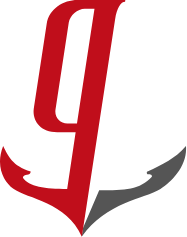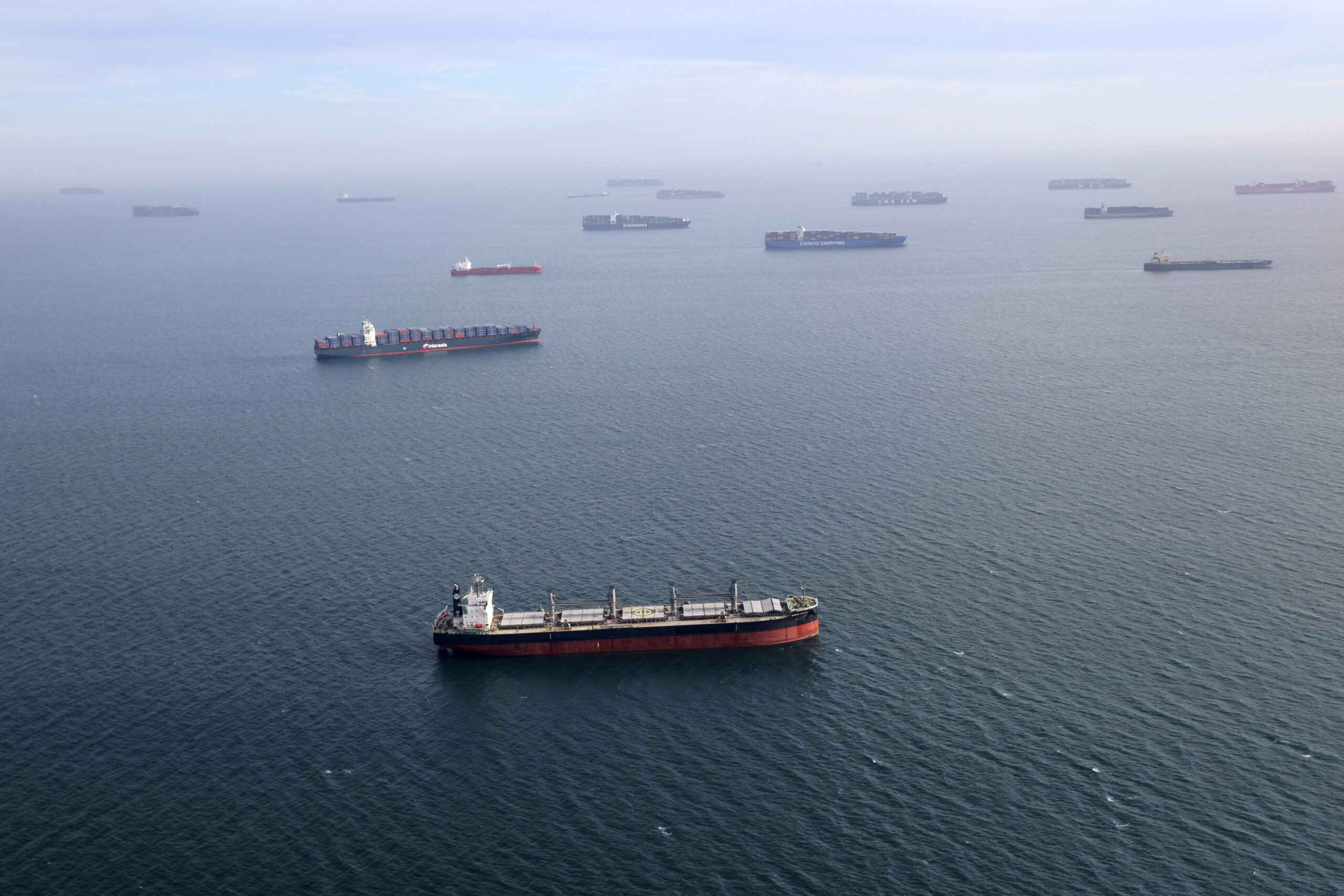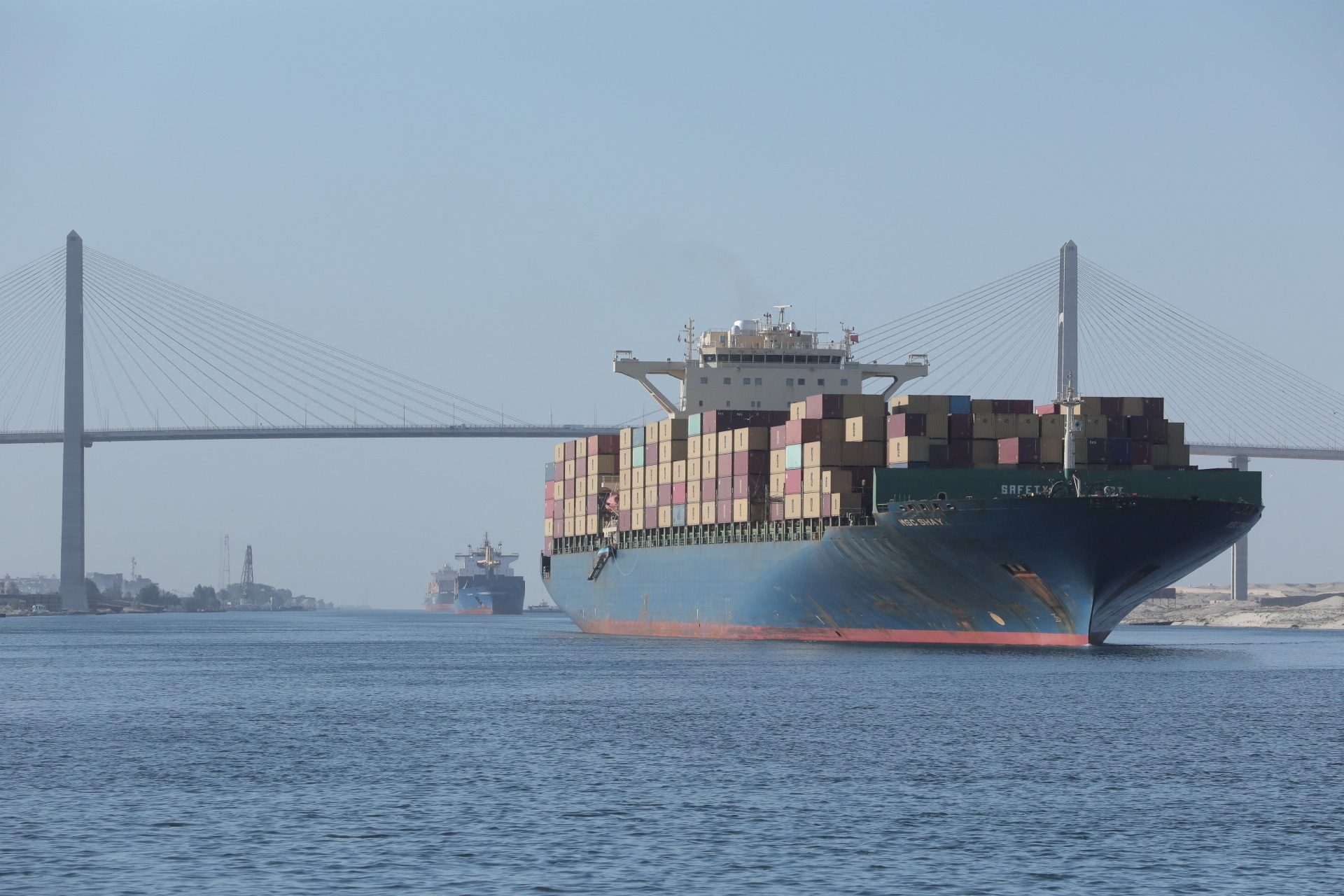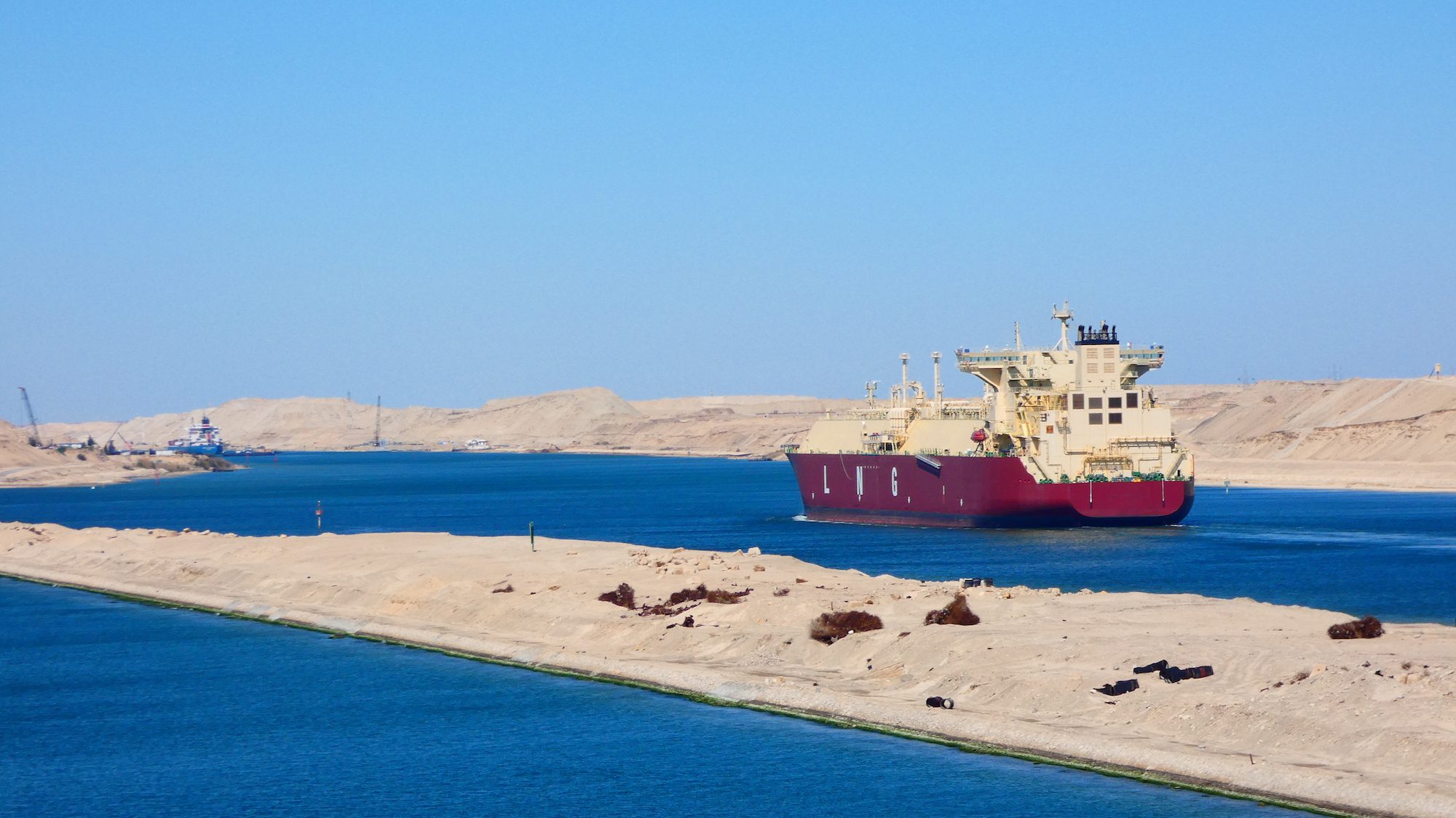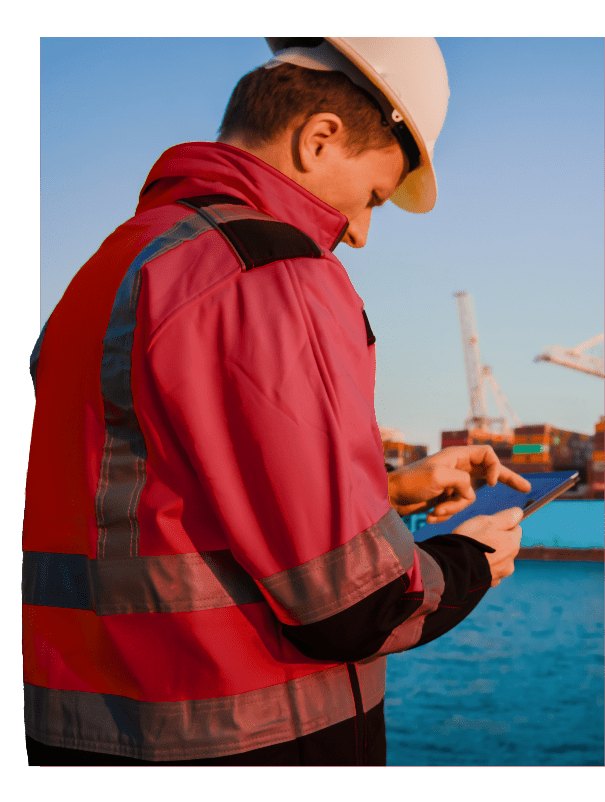Family members (C) of missing passengers onboard the sunken passenger ship Sewol look at South Korean rescue workers operating near floats where Sewol sank, during a rescue operation in Jindo April 24, 2014. REUTERS/Yonhap
By Cynthia Kim, Seonjin Cha and Sam Kim
April 24 (Bloomberg) — Divers retrieved more bodies from a South Korean ferry that sank last week, as investigators turned their attention to whether the vessel had been carrying more cargo than it was designed to hold.
The official death toll reached 159 today, Ko Myung Suk, director general of the equipment and technology bureau at the Korea Coast Guard, said in a televised briefing. The total is likely to reach 302, with no survivors found since 174 of the 476 passengers and crew were rescued on April 16, the day the ‘Sewol’ sank off the Korean peninsula’s southwest coast. About 700 divers are focusing their search on the third- and fourth- level passenger cabins, Ko said.
The vessel’s captain and six of its crew members have been arrested, while 41 other crew members and officials from the ship’s owner and operator Chonghaejin Marine Co. and related companies have been barred from overseas travel, prosecutor Yang Joong Jin said by phone from Mokpo. The investigation team is still trying to confirm if the vessel was carrying too much cargo and if that contributed to the sinking, he said.
“It seems that all they cared about at Chonghaejin Marine is the volume of the cargo and not the actual weight, because the company charges by volume,” Yang said. “We will announce the cargo weight when it’s confirmed.”
Repeated calls to Chonghaejin Marine weren’t answered.
Investigators have said the probe includes whether expansion work on the ferry contributed to its sinking by making it unstable. The 20-year-old Japan-made ferry had a fifth-deck added to boost capacity to 956 passengers and crew, 116 more than when Chonghaejin Marine bought it from Japanese ferry operator A-Line in October 2012.
Ship Modifications
The modifications passed safety inspections by the Korean Register of Shipping, an official at the inspector told Bloomberg last week, asking not to be named citing internal policy. The official didn’t comment on how much cargo the refitted ferry was designed to hold.
After the redesign, the ferry had a maximum cargo capacity of 987 tons, compared with 2,437 tons previously, the office of opposition lawmaker Kim Yung Rok said in an e-mailed statement, citing information from Korean Register.
Chonghaejin Marine official Kim Jae Beom indicated last week the ferry wasn’t overloaded, in comments broadcast by YTN. It left Incheon port on April 15 with 3,600 tons of cargo, compared with a maximum limit of 3,960 tons, he said.
Korean Register didn’t return calls seeking comment today.
The vessel was built by Japan’s Hayashikane Dockyard Co. in 1994 and had no accidents during 18 years of operation in Japan, according to Takaharu Miyazono, a spokesman for A-Line.
Financial Probe
The probe will also include the finances of Chonghaejin Marine, its related companies and owner Yoo Byung Eun, according to Kim Hoe Jong, a prosecutor in Incheon, the Sewol’s departure port and where the company has offices. Prosecutors raided Chonghaejin Marine’s Incheon offices on April 17.
“The target of our probe includes the owner family led by Yoo Byung Eun, focusing on any embezzlement and assets concealed across affiliates,” Kim said by phone today. “Another prosecutor is investigating corrupt acts in the marine transportation business, which seem to be prevalent across the industry and in the institutions supervising it.”
Any embezzled funds or other assets would be used for compensation for victims and their families, he said.
Privately-held Chonghaejin Marine posted an operating loss of 785.4 million won last year on sales of 32 billion won, according to its 2013 audit filed to the regulatory Financial Supervisory Service on April 18, two days after the sinking. The company had cash reserves of 622 million won, total assets of 33.1 billion won and 26.6 billion won of liabilities as of December, the audit filing showed.
Ownership Structure
Chonhaiji Co., a closely-held maker of vessel parts, owns 39 percent stake in Chonghaejin Marine, the report shows. Chonhaiji is 43 percent-owned by another unlisted company I-One- I Holdings Co., whose biggest shareholders are Yoo Hyuk Gi and Yoo Dae Kyoon, according to the companies’ audit reports.
There is no mention of Yoo Byung Eun in any of the audit reports of Chonghaejin Marine, Chonhaiji or I-One-I Holdings.
Attempts to reach Yoo via Chonghaejin Marine weren’t successful.
A church operated by Yoo Byung Eun’s family is also being investigated as a potential source of slush funds, prosecutor Yang in Mokpo said.
The Sewol is insured by Meritz Fire & Marine Insurance Co. for up to 7.8 billion won for the period ending Oct. 4, 2014 and an additional 3.6 billion won by the Korea Shipping Association, according to the audit report. Chonghaejin also has an insurance policy to cover compensation liability of up to $10 million for the Sewol.
Previous Incident
The Sewol sinking was the second accident in less than a month involving a Chonghaejin ferry, after its “Democracy No. 5” collided with a fishing boat near Incheon late last month, with no casualties, a company official said last week, asking not to be named citing company policy.
Some Sewol crew members told prosecutors they didn’t receive safety training, prosecutor Yang has said. The company’s audit report showed it spent only 541,000 won on crew training last year, though it’s not clear if training is included under other expense items.
More than two thirds of the passengers on the vessel were a group of 339 students and teachers from Danwon High School, near Seoul. The incident may be Korea’s worst maritime disaster since the ‘Namyoung’ ferry sank in 1970, killing 323.
President Park Geun Hye’s approval rating slipped to 57 percent yesterday after reaching as high as 71 percent on April 18, the day after she visited victims’ families near the site of the sinking, Lee Taek Soo, head of Seoul-based polling company Realmeter, said on his Twitter feed today. The drop in approval appears to be driven by unhappiness at the government’s handling of the disaster, Lee said.
–With assistance from Seyoon Kim, Shinhye Kang and Sharon Cho in Seoul.
Copyright 2014 Bloomberg.
Unlock Exclusive Insights Today!
Join the gCaptain Club for curated content, insider opinions, and vibrant community discussions.

 Join The Club
Join The Club



